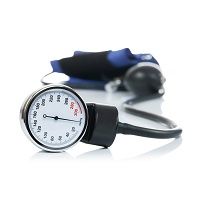Article
Diabetes: Blood Pressure Has a "Sweet Spot"
Author(s):
The "sweet spot" where blood pressure control reduces cardiovascular risk without undue side effects may actually be a little higher than traditionally recommended for people with diabetes between ages 60 and 85.

The "sweet spot" where blood pressure control reduces cardiovascular risk without undue side effects may actually be a little higher than traditionally recommended for people with diabetes between ages 60 and 85.
The eighth Joint National Committee (JNC8) has just released new guidelines for pharmacologic treatment of hypertension for people with diabetes, calling for a threshold target of 140 mm Hg/90 mm Hg. That measurement is above the current recommendation of 130 mm Hg/90 mm Hg. Since this population is already at high risk for cardiovascular disease, stroke, and kidney disease, controlling hypertension is critical.
The JNC8 released its guidelines separately from the American College of Cardiology/American Heart Association panel, which currently recommends a target of 130 mm Hg/90 mm Hg. However the American Diabetes Association, American Society for Hypertension/International Society for Hypertension, and European Society of Cardiology/European Atherosclerosis Society have all suggested similar targets for this population. ACC/AHA’s recommendations are expected to come out at the end of the year.
“We’re in harmony,” said Jan Basile, MD, professor of Medicine at the Seinsheimer Cardiovascular Health Program at the Medical University of South Carolina, Charleston, SC, speaking at the 19th Annual Conference on Hypertension, Diabetes and Dyslipidemia in Charleston, SC. As for the ACC/AHA, Basile said, “It will be interesting to see what [they] come up with at the end of the year for patients under 80 years--I bet they will go to 140/90."
The JNC8 reviewed randomized clinical trial data from 1966 through 2009, excluding any studies that had fewer than 100 patients or used other methodologies such as meta-analyses. The group found very little difference between 130 mm Hg/80 mm Hg and 140 mm Hg/90 mm Hg in risk of mortality, diabetes, heart disease, and chronic kidney disease.
Targets of less than 130 mm/Hg may be appropriate for certain patients such as younger patients or those at high risk for stroke, in which there was evidence of greater protection from a lower blood pressure. However, although 115 mm/Hg is considered healthy in the general population, there was no evidence that trying to drive diabetic patients’ levels to below 120 mm Hg made a difference.
“For the sake of simplicity, the panel recommends starting treatment at the threshold level or treatment goal of 140/90,” Basile said. So if a patient is at 140 mm Hg/90 mm Hg, he said, you start treatment to keep it at that level or below. The 4 key decision factors for deciding whether to use these targets are age over 59, chronic kidney disease, diabetes, and race (particularly African American, since this population is at higher risk).
The new JNC8 guidelines also recommend that initial treatment for hypertension start with a thiazide-type diuretic, angiotensin-converting enzyme (ACE) inhibitor, calcium channel blocker (CCB), or angiotensin receptor blocker (ARB). In African Americans, initial treatment should include a thiazide-type diuretic or CCB.
According to the recommendations, ACE inhibitors and ARBs should never be used together in the same patient, based on three studies that showed zero benefit and some harm. A Cochrane Review study also recommends against beginning treatment with beta blockers, based on “the relatively weak effect… to reduce stroke and the absence of an effect on coronary heart disease when compared with placebo.”





